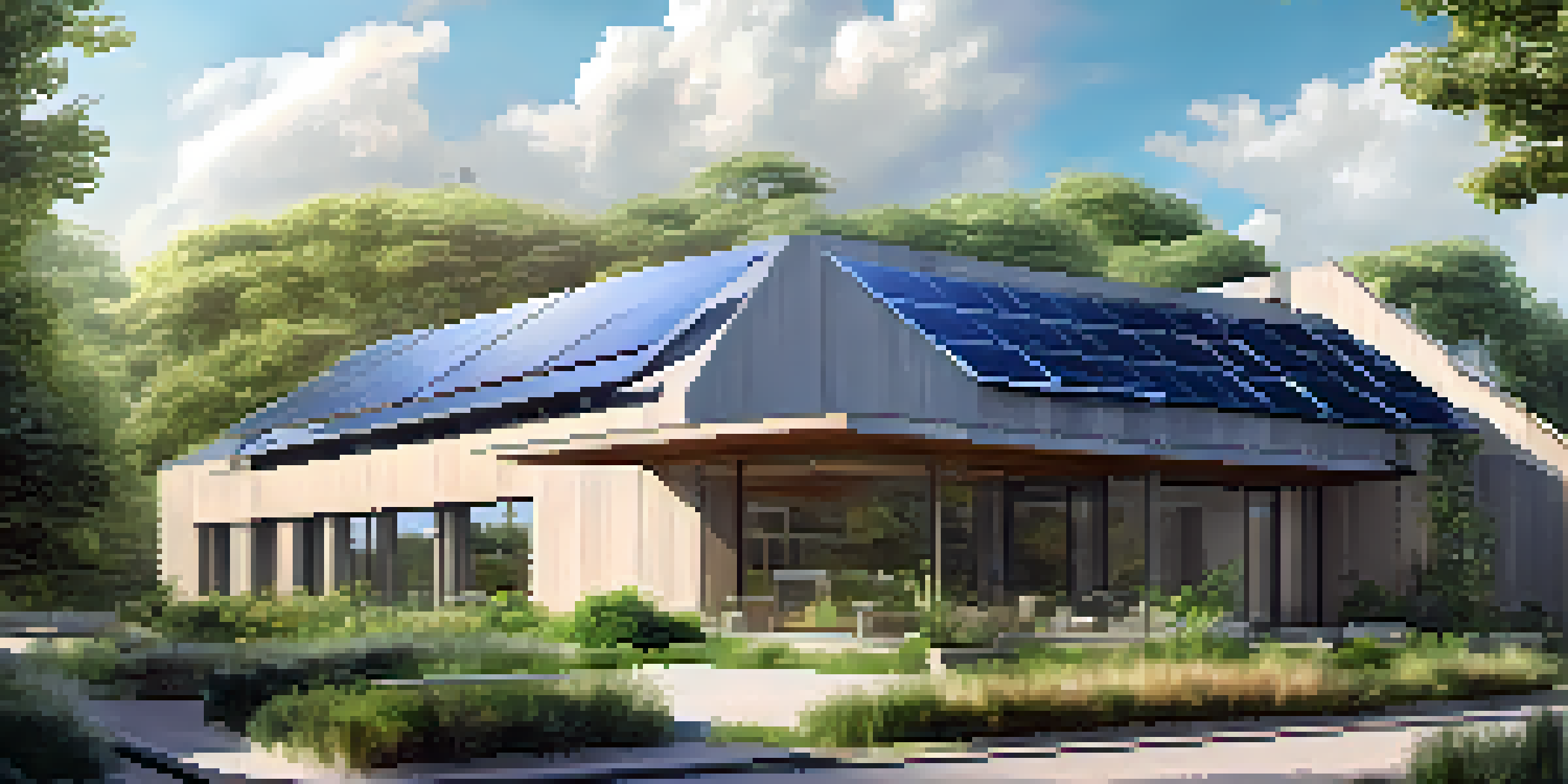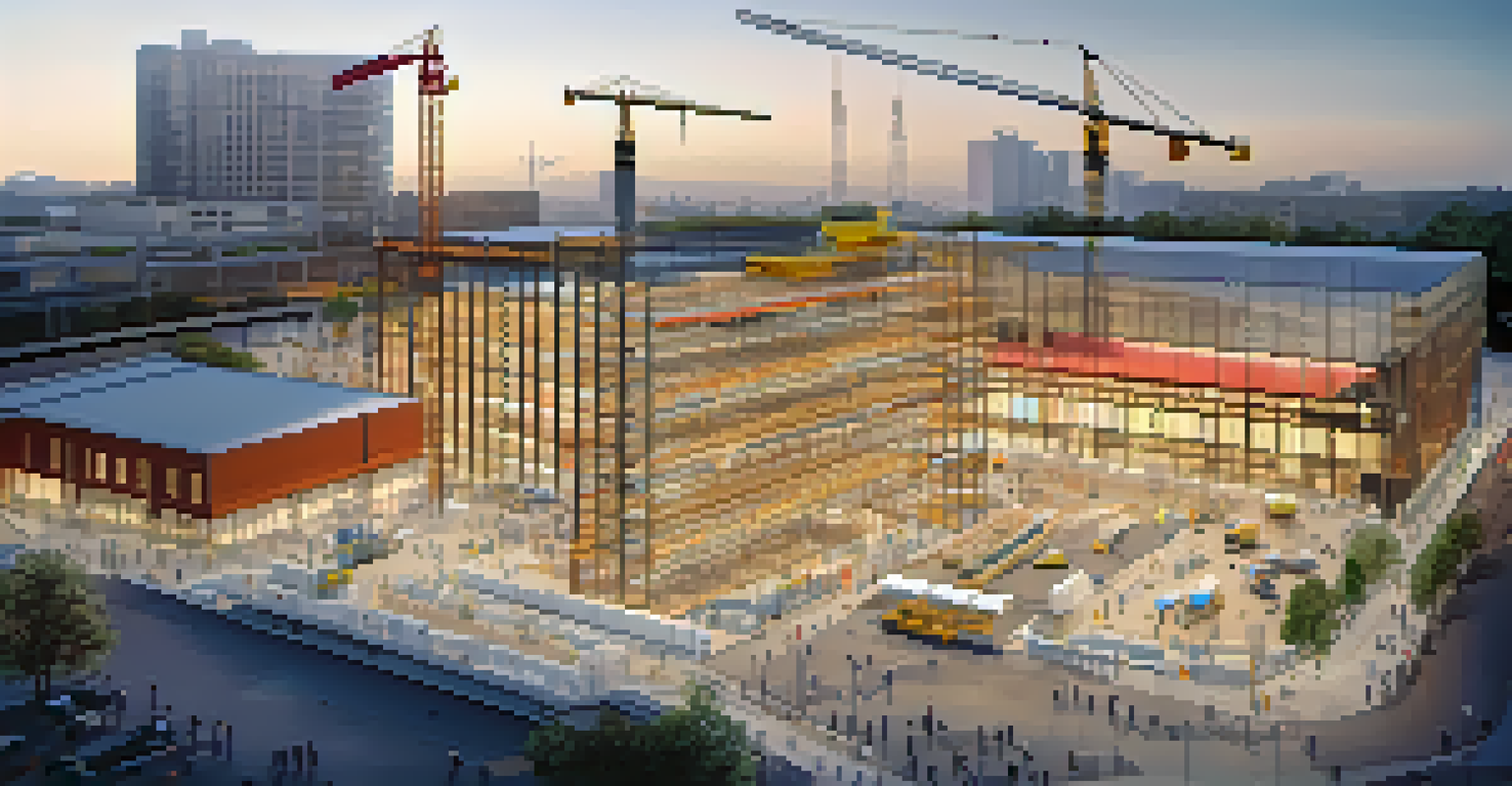The Role of Technology in Sustainable Building Innovations

Understanding Sustainable Building: A Quick Overview
Sustainable building focuses on creating structures that minimize environmental impact while maximizing efficiency. This approach considers the entire lifecycle of a building, from design and construction to operation and demolition. By integrating renewable resources and energy-efficient systems, sustainable buildings aim to lessen their carbon footprint and conserve natural resources.
The greatest threat to our planet is the belief that someone else will save it.
The concept of sustainability in construction isn't new; however, recent innovations have propelled it into the spotlight. People are increasingly aware of their environmental responsibilities, prompting builders and architects to adopt greener practices. This shift is not only beneficial for the planet but also can lead to cost savings in the long run.
With technology playing a pivotal role in this transformation, it's vital to explore how various innovations are reshaping the landscape of sustainable building. From smart materials to energy-efficient systems, technology is driving significant progress in creating eco-friendly structures.
Smart Materials: The Future of Sustainable Construction
Smart materials are revolutionizing the construction industry by offering enhanced performance and adaptability. These materials can respond to environmental changes, such as temperature and humidity, helping buildings maintain optimal conditions without excessive energy use. For instance, phase-changing materials can absorb and release heat, reducing the need for heating and cooling systems.

Incorporating smart materials into building designs not only improves energy efficiency but also enhances occupant comfort. Imagine living in a home that automatically adjusts its temperature based on the weather outside—this is the power of smart materials at work. As technology advances, these materials are becoming increasingly accessible and affordable for builders.
Sustainable Building Reduces Impact
Sustainable building minimizes environmental harm while maximizing resource efficiency throughout a structure's lifecycle.
The integration of smart materials into construction practices signifies a step toward a more sustainable future. Their ability to optimize building performance while reducing resource consumption is a game-changer for the environment and the economy alike.
Energy Management Systems: Optimizing Resource Use
Energy management systems (EMS) are instrumental in monitoring and controlling energy consumption in buildings. By leveraging data analytics and IoT technology, these systems can provide real-time insights into energy use patterns, enabling better decision-making. For example, an EMS can identify peak energy usage times and suggest ways to reduce consumption during those periods.
Sustainability is no longer about doing less harm. It's about doing more good.
Furthermore, EMS can integrate with renewable energy sources, such as solar panels, to optimize energy production and consumption. This synergy not only reduces reliance on fossil fuels but also enhances the building’s sustainability credentials. Imagine a commercial building that can automatically adjust its energy use based on solar generation—this is the efficiency that EMS provides.
As more buildings adopt energy management systems, we can expect to see significant reductions in energy waste. This shift not only benefits the environment but also reduces operational costs, making it a win-win for builders and occupants alike.
Building Information Modeling: A Blueprint for Efficiency
Building Information Modeling (BIM) is a digital representation of a building's physical and functional characteristics. This innovative technology allows architects, engineers, and builders to collaborate more effectively during the design and construction phases. By creating a detailed 3D model, teams can identify potential issues early, reducing costly mistakes down the line.
BIM also enhances sustainability by allowing for better planning in terms of materials and resource allocation. A well-designed model can optimize energy efficiency and help select sustainable materials, ensuring that the building meets its environmental goals. For instance, BIM can simulate how sunlight will impact a building throughout the day, aiding in the placement of windows and solar panels.
Smart Materials Enhance Efficiency
Smart materials adapt to environmental changes, improving energy efficiency and occupant comfort in buildings.
As BIM technology continues to evolve, its role in sustainable building practices will only grow. By streamlining processes and improving communication, BIM not only boosts efficiency but also contributes to more sustainable construction outcomes.
Renewable Energy Integration: Powering Sustainable Buildings
Integrating renewable energy sources, such as solar and wind, into building designs is crucial for achieving sustainability. These energy sources provide clean power, significantly reducing a building's carbon footprint. For example, solar panels can be installed on rooftops or integrated into building facades, generating electricity while taking up minimal space.
The advancements in renewable energy technology have made it more feasible and cost-effective for builders to incorporate these systems. With incentives and tax credits available in many regions, the initial investment is becoming increasingly manageable. By harnessing renewable energy, buildings can achieve greater energy independence and resilience.
As more sustainable buildings emerge, the integration of renewable energy will become a standard practice. This shift not only benefits the environment but also fosters a culture of sustainability within communities, encouraging individuals and businesses to adopt eco-friendly practices.
Smart Home Technologies: Enhancing Living Spaces
Smart home technologies are transforming the way we interact with our living spaces, making them more efficient and sustainable. Devices such as smart thermostats, lighting systems, and appliances allow homeowners to monitor and control energy use from their smartphones. For instance, a smart thermostat can learn your schedule and adjust temperatures accordingly, saving energy without sacrificing comfort.
These technologies also contribute to sustainability by enabling better resource management. Imagine being able to turn off lights and appliances remotely when you're away from home—this level of control helps reduce energy waste. Additionally, smart home systems can provide insights into energy consumption patterns, empowering homeowners to make informed decisions about their usage.
Renewable Energy Fuels Sustainability
Integrating renewable energy sources into building designs is essential for reducing carbon footprints and promoting eco-friendly practices.
As smart home technologies become more widespread, they will play a crucial role in the sustainability movement. By enhancing energy efficiency and promoting conscious consumption, these innovations help create greener, more responsible living environments.
The Future of Sustainable Building Innovations
The future of sustainable building innovations is bright, driven by the ongoing advancements in technology. As more builders, architects, and communities embrace eco-friendly practices, we can expect to see a surge in innovative solutions that prioritize sustainability. From advanced materials to smart systems, the possibilities are endless.
Technological developments, such as artificial intelligence and machine learning, will continue to enhance the efficiency and effectiveness of sustainable building methods. For example, AI can optimize energy management systems by predicting usage patterns and suggesting improvements. This type of innovation not only benefits individual buildings but also contributes to broader environmental goals.

As we look ahead, it's clear that technology will remain a key player in the pursuit of sustainable building. By continually pushing the boundaries of what's possible, we can create structures that not only meet our needs but also protect the planet for future generations.